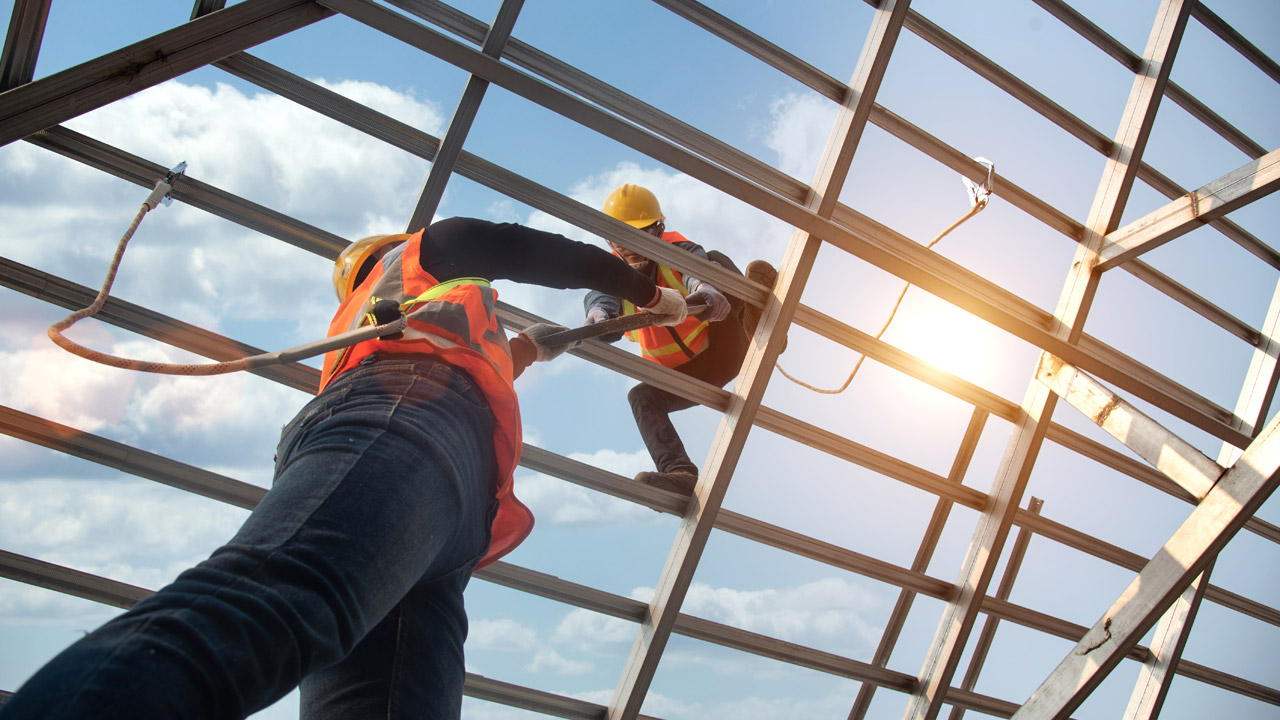

Common Roofing Terms Every Home & Business Owner Should Know
Navigating the world of roofing can be complex for homeowners, especially when faced with the industry's specialized vocabulary. Understanding these terms is crucial when discussing a significant investment like a new roof. This guide elaborates on common roofing terms, to help homeowners better understand roofing terminology.
The team at LOA Construction can help you understand these roofing terms better:
Request an Appointment

Decking
Decking, typically made from plywood, encloses and reinforces the roof structure, providing a sturdy base for shingles. If water breaches the outer layer and underlayment, reaching the decking, prompt roof repairs are necessary to avoid extensive damage.
Dormers
A dormer is a protruding section of the roof, often housing a window, creating its own mini roof structure. Dormers not only add architectural interest but also provide natural light and space within the attic or upper floors.
Drip Edge
A drip edge is an L-shaped metal molding attached to the roof's edge. It guides water away from shingles near eaves and gutters, preventing water infiltration while reinforcing the roof's structure.
Eaves
Eaves are the horizontal borders where your roof meets the gutters. These edges play a crucial role in water management, protecting your home from leaks and water damage. Beneath the eaves, you'll often find an eave membrane under the shingles, which guards against water infiltration, especially from ice dams in colder seasons.
Read More: 4 Tips for What to do When Your Roof Starts Leaking
Fascia
Fascia are the long boards running along the lower roofline, supporting the bottom row of shingles or tiles. They block moisture, carry the weight of the gutter system, and enhance the roof's aesthetic by offering additional color options. Materials vary from wood to vinyl and aluminum.
Flashing
Flashing is a weather-resistant material (like aluminum or steel) used to prevent water infiltration. Commonly found in valleys, around chimneys, and roof vents, flashing can be flexible or rigid. Step flashing is used for inclined areas, installed in a step-like pattern.
Hips
Hips are the downward-sloping ridges at the intersection of two roof planes. Not present on all roof types (like flat roofs), hips are characteristic of various styles like Hip and Valley, Cross Hipped, or Pyramid Hipped roofs. They project outward, opposite to valleys.
Rakes
Rakes refer to the sloped edges of your roof. Although similar to eaves, the key difference is their angle; rakes are slanted, unlike the horizontal eaves. If an edge isn't parallel to the ground, it's a rake.
Ridges
The ridge is the top horizontal line of your roof, usually the highest point of the roof's frame. Most homes have a single ridge, but larger buildings might have multiple. Ridge vents installed here aid in ventilating the attic, allowing warm, moist air to escape.
Roof Vents
Roof vents are crucial for a well-ventilated home. They draw air from soffit vents and regulate temperature and moisture. With open sides and fins made of metal or plastic, they efficiently pull air through the system. Solar vents are a sustainable option, potentially reducing energy costs.
Read More: Is Your Roof Leaking by a Vent Pipe?
Soffits
Soffits are the enclosed underside of overhanging eaves. They provide an aesthetic finish by hiding visible rafters and are functional in allowing air circulation through the roof and attic, aiding in temperature regulation and moisture prevention.
Starter Shingles
Starter shingles are pre-cut roofing materials installed at the eaves and rakes before the main shingles. They provide a crucial initial layer of protection, ensuring proper alignment and sealing of the first course of shingles.
Underlayment
Underlayment is a layer of asphalt-saturated felt or synthetic fabric between the roof deck and the outer layer. It offers extra weather protection, helping the roof shed water and protecting the outer layer from decking resin. Many warranties require its installation for added protection.
Valleys
Valleys are the inward-dipping angles formed where two roof slopes meet. These areas are susceptible to water damage and often reinforced with special underlayment or valley flashing to direct water towards gutters. They're critical in cold climates to prevent ice dam formation.
Request an Appointment
Contact LOA Construction for Roofing Services
Our roofing contractors proudly serve residential and commercial customers alike throughout the Austin, San Antonio, Houston, Round Rock, and Belton, Temple, and Killeen areas. We are a trusted local roofing company with more than 500+ five-star reviews to back up the quality of work that we do.
Our roofing services include roofing types such as asphalt, clay tile, metal, TPO, flat roofing, and more. Ready to schedule an inspection? Contact the LOA team today!
Further Reading:
- • Signs Your Roof Needs a Repair
- • Everything You Need to Know About Commercial Roofing
- • Why Do Commercial Buildings Have Flat Roofs?
- • Roof Installations for Businesses
- • 5 Benefits of Metal Roofs in Austin, TX
- • How to Handle Ponding on a Flat Roof
- • How to Waterproof Your Roof
- • Advantages of Metal Roofing Over Other Roofing Materials
- • Roofing in San Antonio: Navigating Roofing Code Compliance
- • How to Repair a Tile Roof
- • Guide to Metal Roof Installations
- • When is Roofing Season in Texas?
- • How to Avoid Common Roofing Mistakes
- • Our Austin Roofing Services
- • TPO Roofing Maintenance
- • Is TPO A Good Roof?
- • Why Is Roof Maintenance Important in Texas?
- • What Questions Do I Need to Ask My Insurance Provider About Replacing My Roof?
- • 5 Things You Should Know About Austin Roofing
- • Should I Repair or Replace My Roof?
